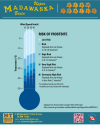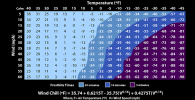watchnerd
Level 8 Valued Member
Of course you can do whatever you want but I'm just gonna say I don't think this is a good idea...
To elaborate, my thinking at the time (and I'm sure there are lots of flaws in the logic):
"I've done these at 175 kg in the dry, so taking off another 50 kg should significantly reduce the effort needed, giving me of an emergency buffer if things get slippery"
"I'll wear the weighlifting shoes because they're harder, sturdier, and generally more stable than my Vivo Barefoots or Chuck Taylors and the ankle lift will make it easier to on the forward knee flexion."
[what I didn't account for was how poor the WL shoes were for traction in slush....I didn't slip, but I had to place my steps very deliberately]



